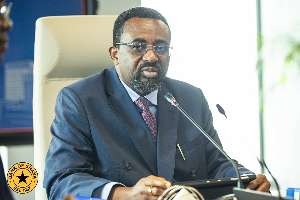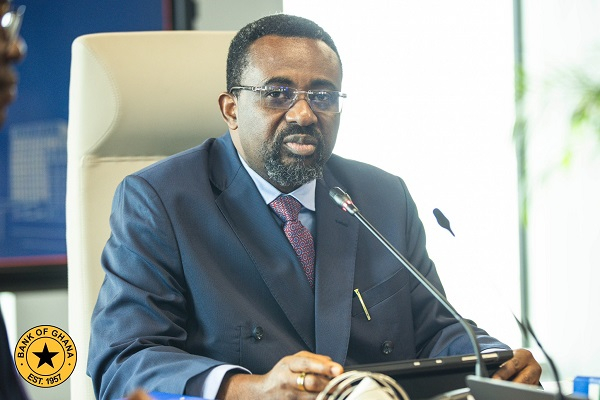 Dr Johnson Asiama, Bank of Ghana Governor
Dr Johnson Asiama, Bank of Ghana Governor
The Bank of Ghana (BoG) faces a crucial monetary policy decision this week, as strengthening signs of macroeconomic recovery clash with lingering risks.
The central bank must weigh whether to adjust its benchmark interest rate to support growth without undermining recent gains in price stability.
Speaking at the 125th Monetary Policy Committee (MPC) meeting opening on Monday, Governor Johnson Pandit Asiama acknowledged the difficult balancing act ahead.
“The question before us is whether the current macroeconomic configuration warrants a recalibration of our monetary policy stance,” he said.
Headline inflation fell to 13.7 percent in June, the lowest since December 2021, on account of tight monetary and fiscal policy alongside a sharp appreciation of the cedi this year.
The currency strengthened 42.6 percent against the US dollar in first half of the year, buoyed by improved trade performance, stronger remittance inflows and renewed investor confidence following successive IMF (International Monetary Fund) programme reviews.
Meanwhile, economic activity has exceeded expectations, with provisional data showing real GDP (Gross Domestic Product) expanded 5.3 percent in first-quarter 2025 with non-oil GDP rising 6.8 percent, led by agriculture and services. BoG’s Composite Index of Economic Activity rose 4.4 percent in May, pointing to continued momentum in consumption, trade and tourism.
These developments have led market analysts to anticipate a possible reduction in the policy rate for the first time in the current cycle. Apakan Securities projects a cut of 200 basis points (bps), citing the return of positive real yields following a prolonged period of negative inflation-adjusted returns.
“The steep disinflation trajectory has now anchored real returns, which we believe will help boost investor confidence,” the firm said in a research note.
Some observers, however, argue for a more cautious approach; stating that a measured rate cut is likely – especially if inflation and FX trends hold through end-July – with the cut being modest, around 50 basis points and paired with cautious guidance.
Governor Asiama confirmed that inflation expectations have become more anchored and external buffers have strengthened. Yet he also warned of emerging risks that could complicate the Bank’s inflation outlook, including exchange rate volatility, global oil price movements and planned tax increases. These, he said, could affect pricing behaviour and stoke inflationary expectations.
Despite recent gains, including a US$5.6billion trade surplus and primary fiscal surplus of 1.1 percent of GDP, analysts say BoG is keen to preserve its policy credibility while cautiously supporting recovery.
Market sentiment shifts toward safe-haven assets
BoG’s posture comes as gold prices rallied past the US$3,400 threshold last week, closing at US$3,431.10 – underpinned by heightened demand for safe-haven assets in the face of persistent macroeconomic uncertainty.
Domestically, NewGold ETF tracked the upswing, advancing 2.51 percent on the week to GH¢373.75. Trading activity surged sharply, with average daily volumes rising more than tenfold to 9,718 units – up from 844.4 units the previous week.
Average daily turnover followed suit, increasing over 600% to GH¢3.6million with a total of GH¢18.14million in shares traded; almost ten times the prior week’s GH¢1.9million, promoting investors pivoting toward gold-backed assets amid sustained foreign exchange volatility and uncertainty over the trajectory of global interest rates.
Policy direction, credibility
With inflation easing and economic momentum building, analysts maintain that BoG has room to manoeuvre. Yet, it must act without sending mixed signals about its inflation-fighting resolve, they insist.
While a cut in the policy rate could help lower borrowing costs and encourage private sector credit growth, an overly aggressive move might reignite inflation expectations or weaken the cedi.
Kwadwo Acheampong, an investment analyst, said he also expects a 200 basis point cut – arguing that “the macro backdrop now provides an opportunity to reset the policy stance more decisively”.
The analysts agreed that the market is watching, not only for the policy rate’s direction but also signals about the Bank’s tolerance for risk in the face of both domestic progress and external uncertainty.
